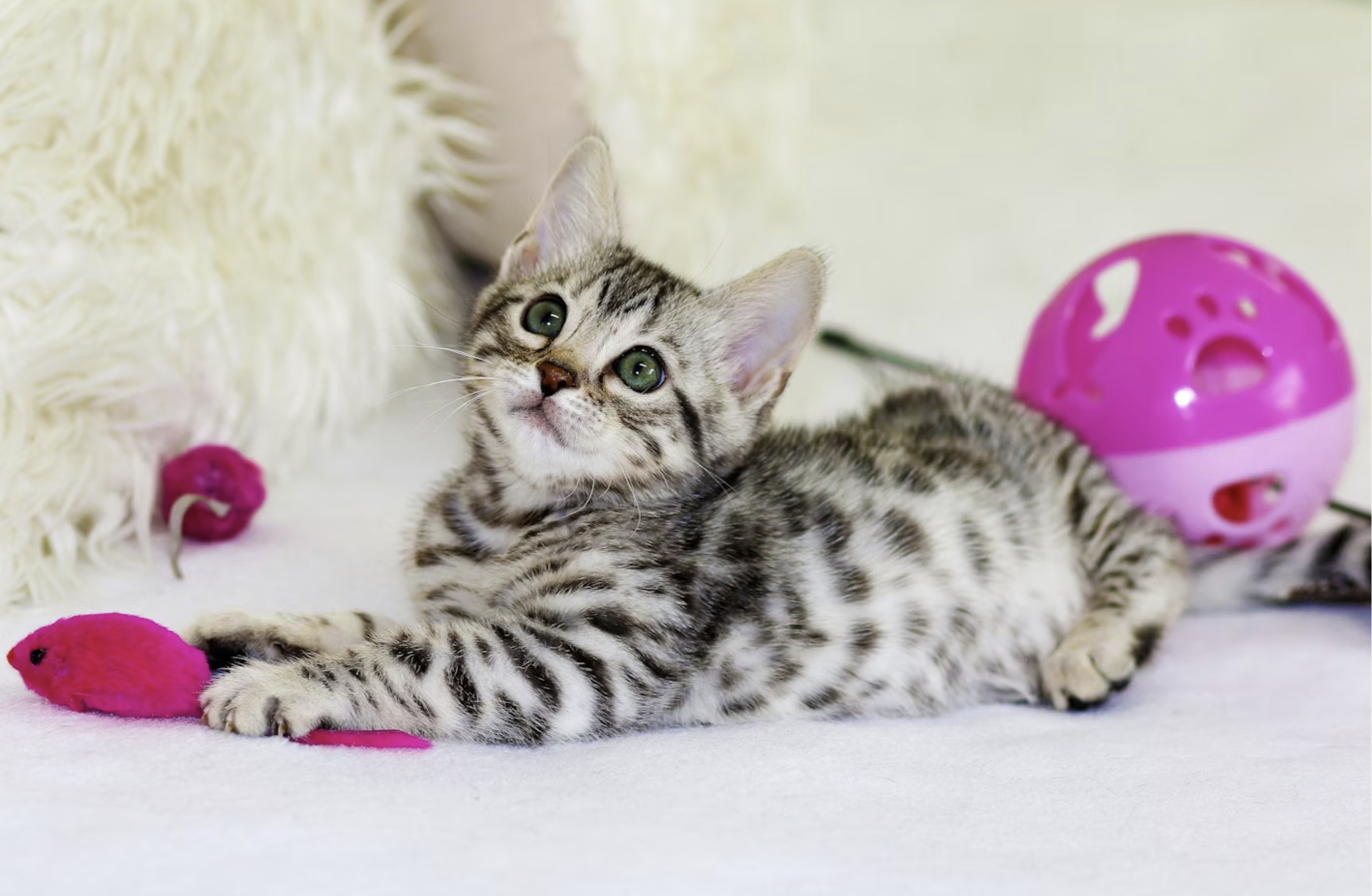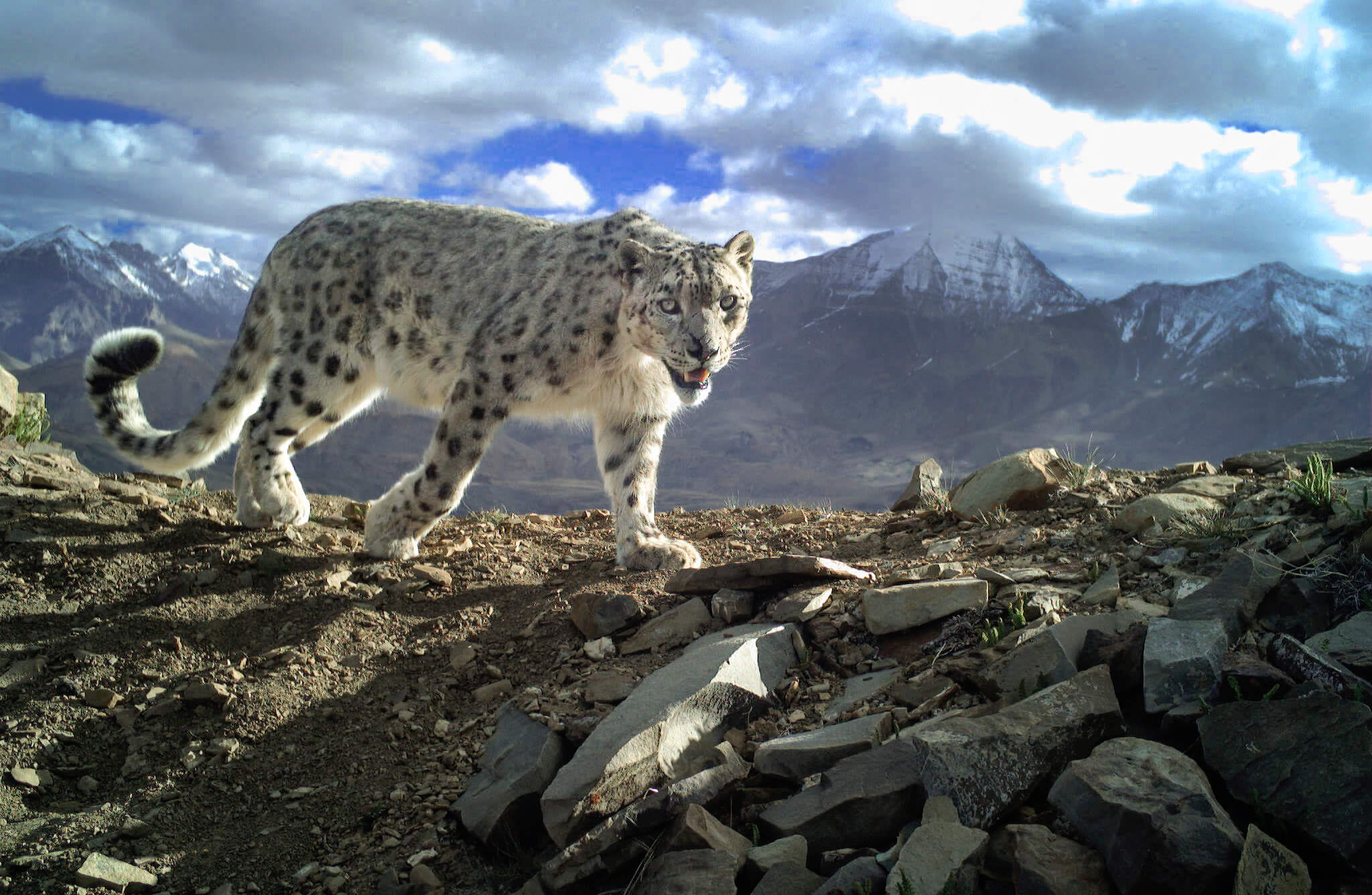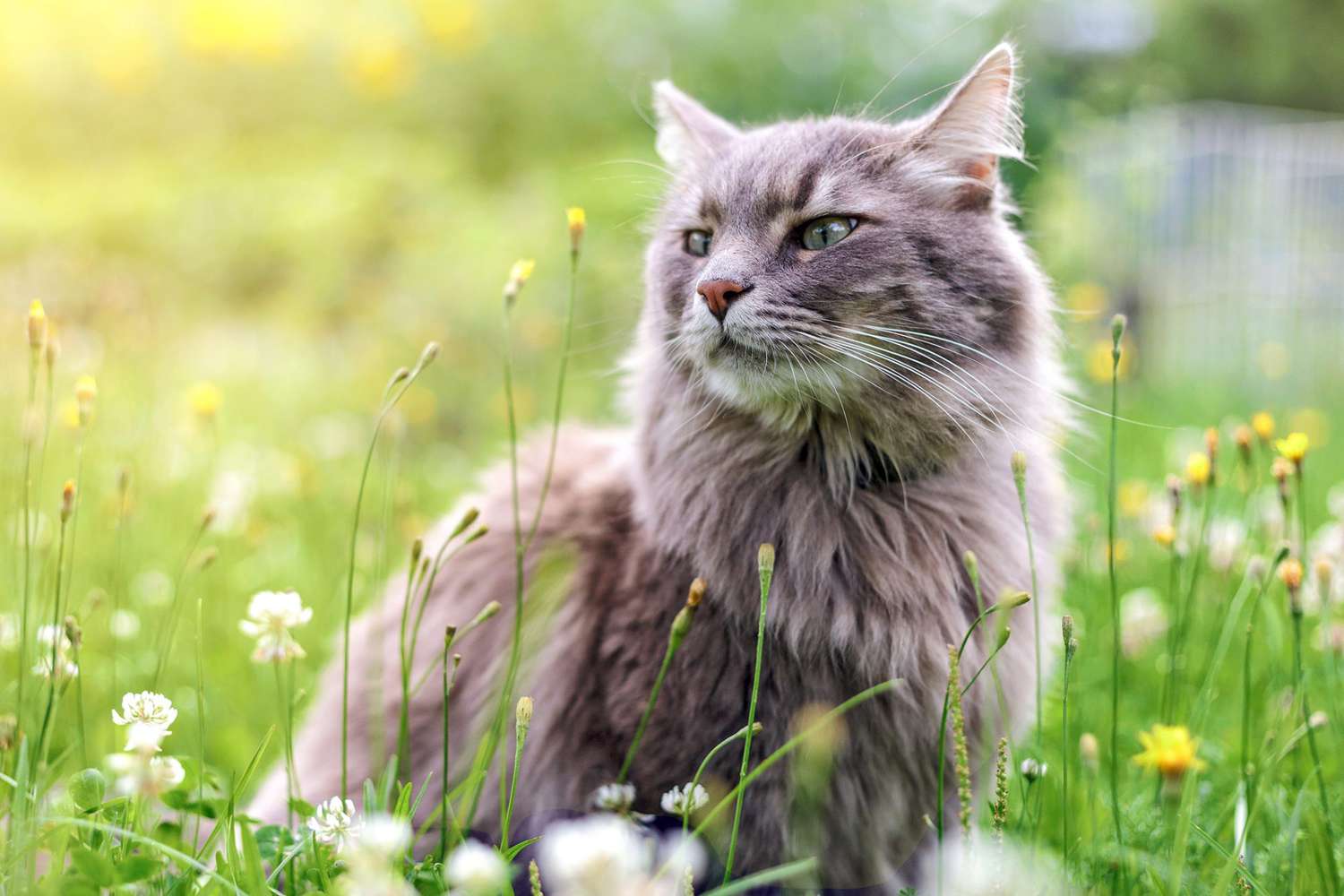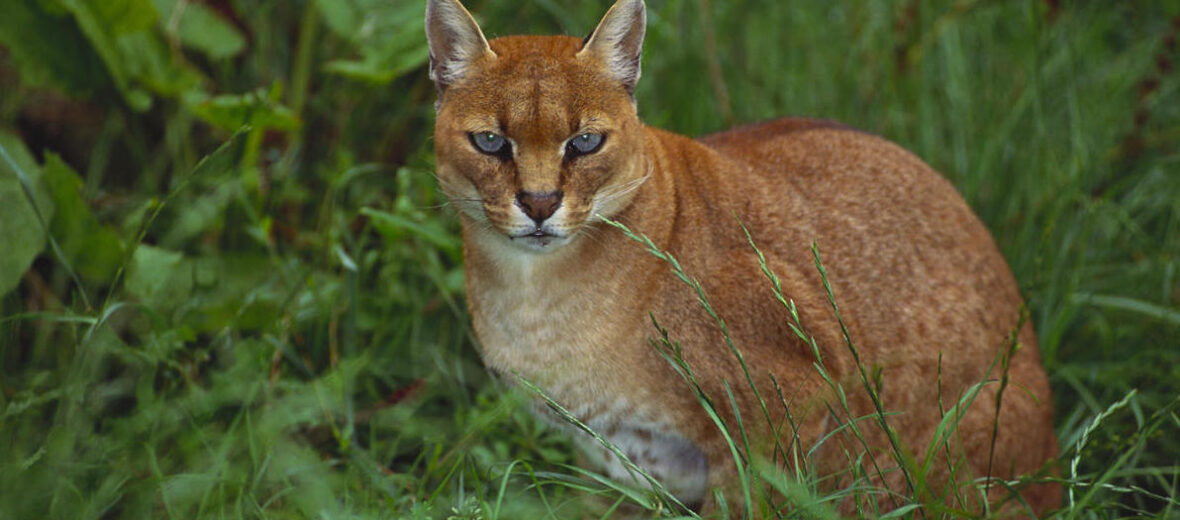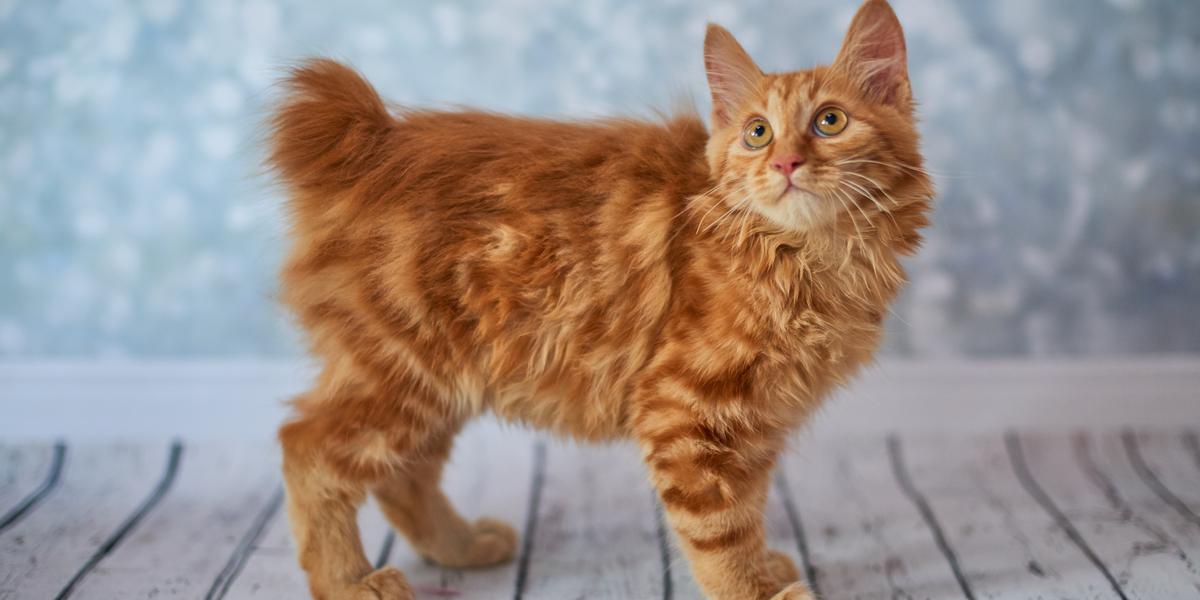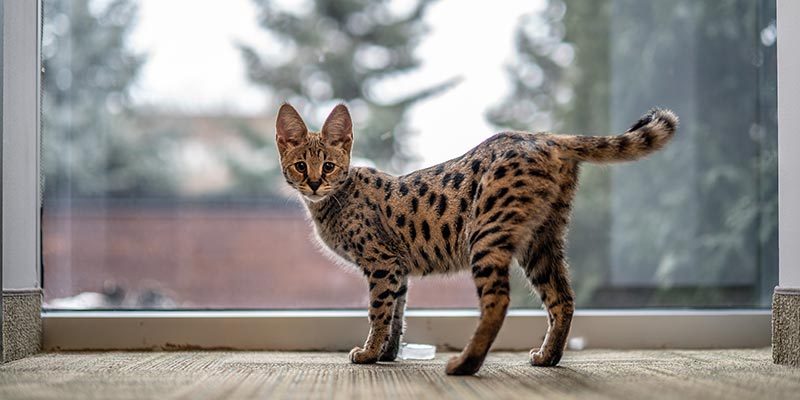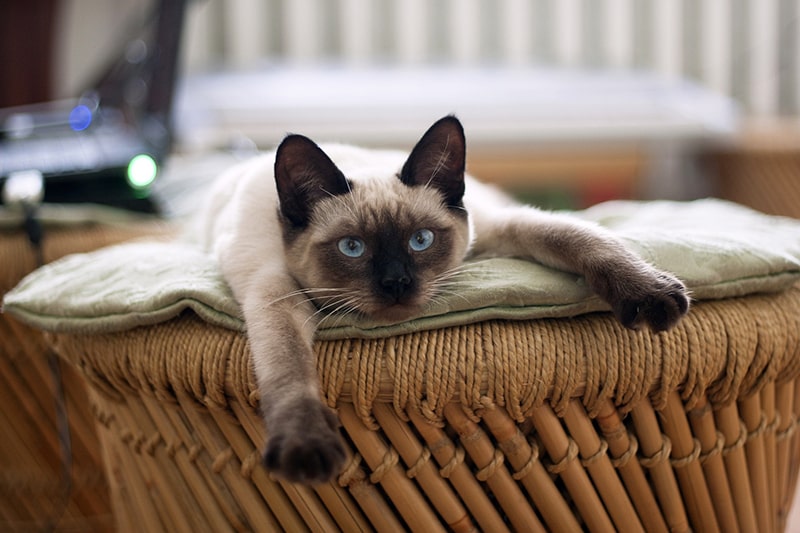Egyptian cat breeds are among the most ancient breeds, and Egypt is widely recognized as the birthplace of the domesticated cat. Cats played a vital role in the culture of ancient Egypt, and they were revered, kept as pets, and played an important role in Egypt becoming the agricultural powerhouse that it was.
In fact, cats were so important in ancient Egypt that they were even mummified and placed in tombs. There are seven purebred Egyptian cat breeds alive today, and they are varied in terms of both appearance and personality.
You are reading: 7 Types Of Egyptian Cat Breeds
These breeds include the Egyptian Mau, Abyssinian, Nile Valley Egyptian Cat, Chausie, Shirazi, African Wildcat, and Savannah Cats. However, it is important to note that some cat breeds that people think are Egyptian actually have their origins in other parts of the world.
In this article, we will explore the seven types of Egyptian cat breeds in more detail.
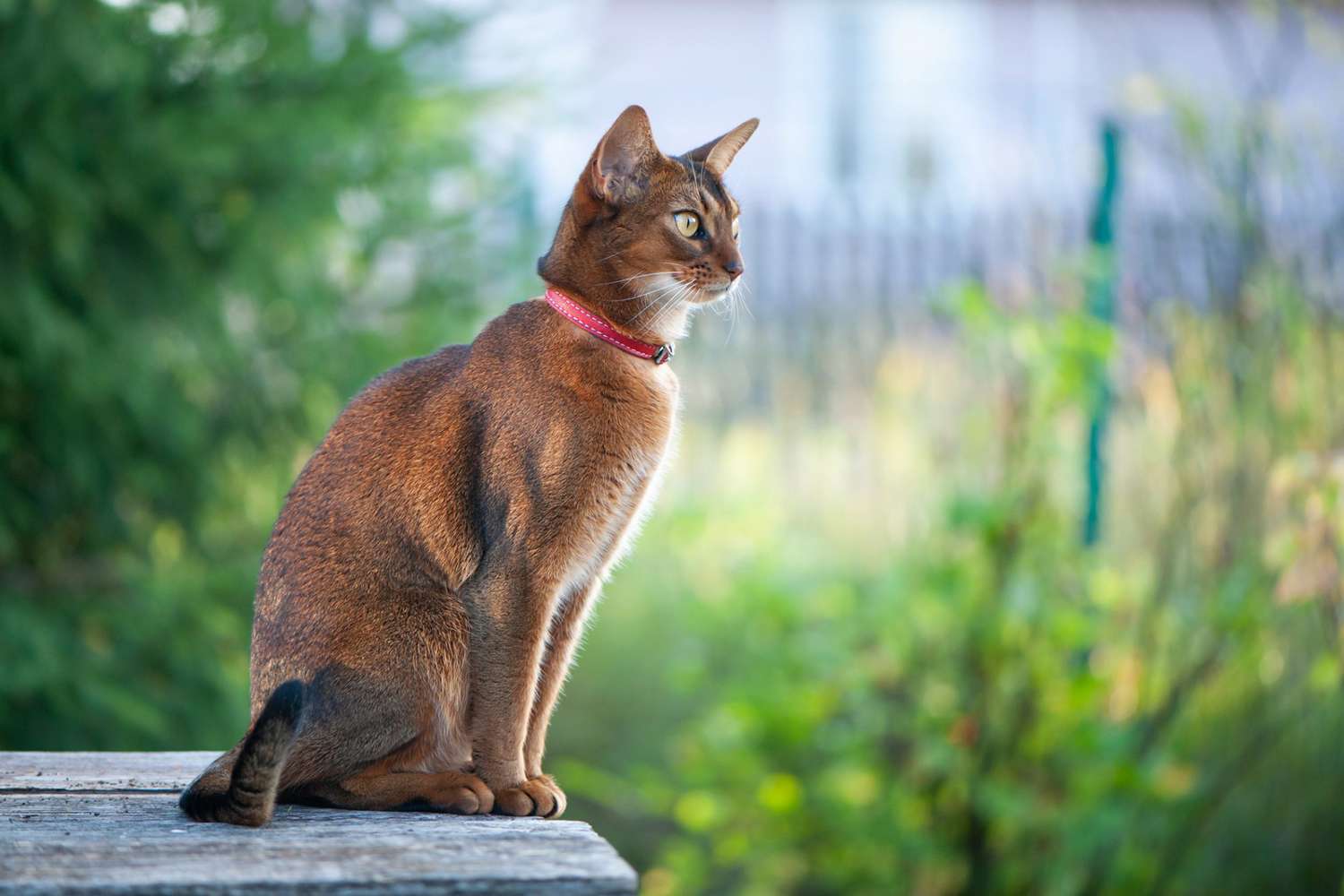
7 Types Of Egyptian Cat Breeds
Egyptian Mau
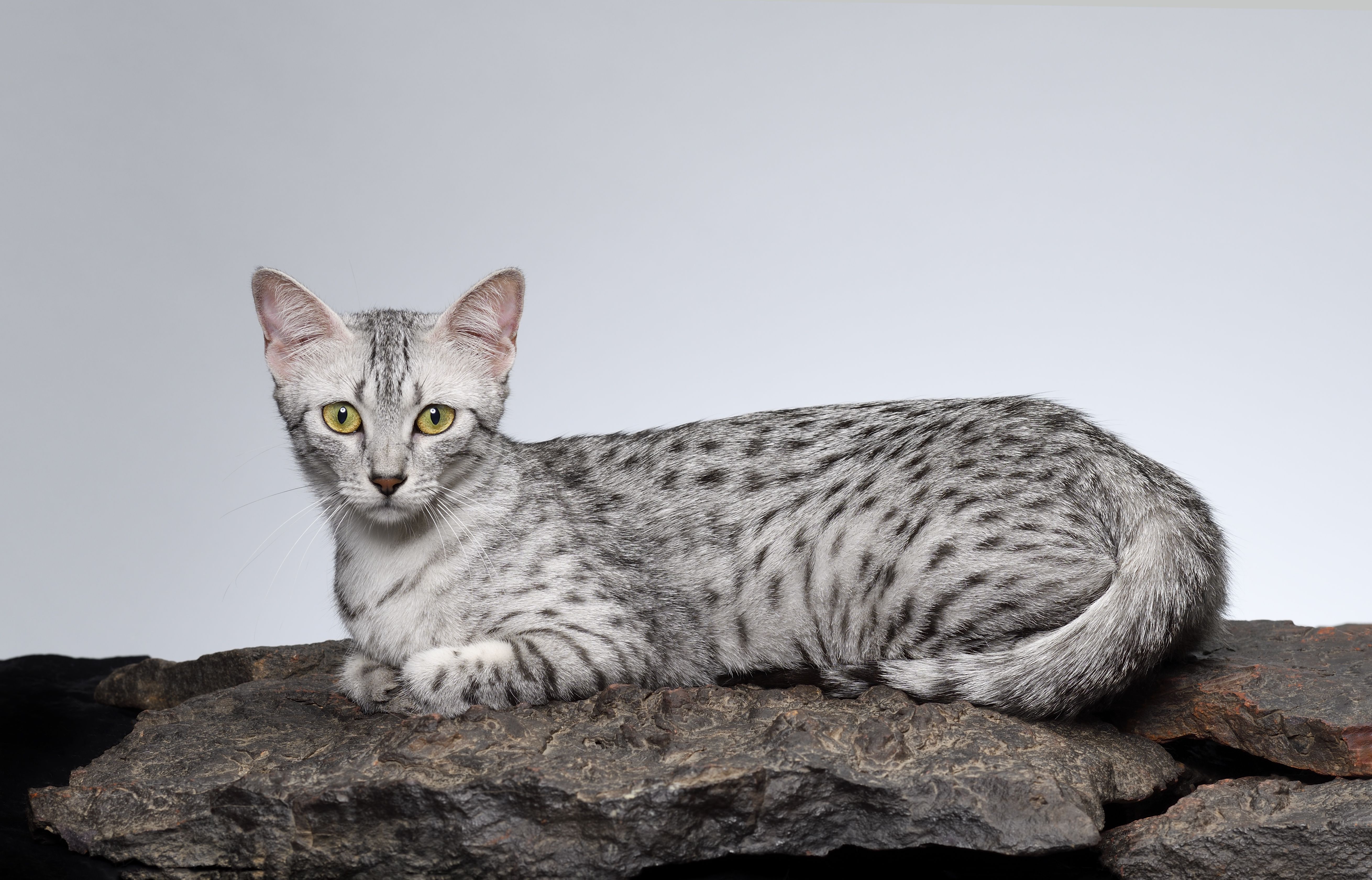
The Egyptian Mau is a small to medium-sized, short-haired cat breed. It is one of the few naturally spotted breeds of domesticated cats, with spots occurring only on the tips of its coat hairs. Here are some key characteristics and facts about the Egyptian Mau:
– Appearance: The Egyptian Mau has a medium-length, muscular body with hind legs longer than the front, giving it the appearance of standing on tiptoes when upright. It has a wedge-shaped head, almond-shaped eyes (usually gooseberry-colored), and a coat that comes in silver, bronze, and smoke colors.
– History: The Egyptian Mau is considered one of the oldest domesticated cat breeds, with a history dating back at least 3,000 years. It may be related to a spotted subspecies of the African Wild Cat. Archaeologists have discovered cats in the tombs of ancient Egyptians that resemble the Egyptian Mau of today.
– Temperament: Egyptian Maus are intelligent, highly active, and playful cats that require lots of stimulation in their environment. They are known for their unique tail wiggle when they are happy. While they can be aloof with strangers, they will warm up to new people when given time. They are fiercely devoted to their humans and often meow in a pleasant voice to show signs of happiness and affection.
– Athleticism: Egyptian Maus are one of the most athletic and agile cat breeds. They are capable of leaping six feet in the air from a standing position and running up to 30 miles per hour. Their high-energy nature enables them to burn off calories, and they enjoy playing with water. Providing them with daily playtime and opportunities for exercise is essential.
– Grooming: The Egyptian Mau has an easy-to-maintain coat that benefits from being wiped down once a week with a slightly damp washcloth to retain its shine. They are moderate shedders, and weekly combing can help remove loose hair.
– Health: Egyptian Maus are generally healthy cats, but they may be predisposed to urolithiasis and pyruvate kinase deficiency. Responsible breeders do their best to develop healthy cats, and regular veterinary check-ups are important for maintaining their well-being.
Read more : The Balinese Cat Breed – Information, History, & Characteristics
– Size: The Egyptian Mau is a medium-sized cat, with males weighing 10 to 14 pounds and females weighing 6 to 10 pounds.
Chausie
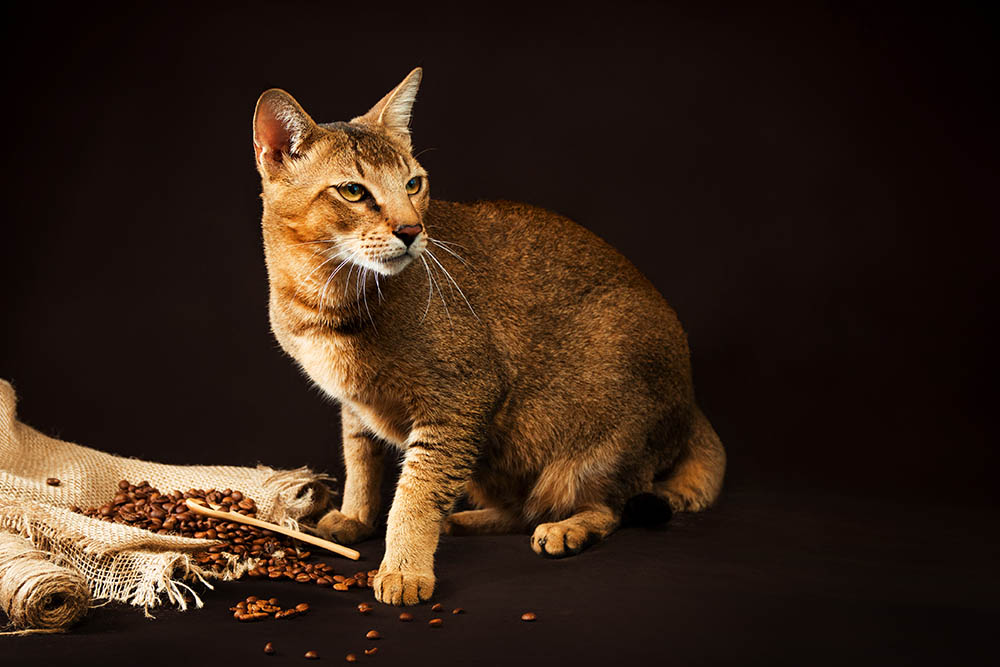
The Chausie is a domestic breed of cat that was developed by breeding a few individuals from the non-domestic species jungle cat (Felis chaus) with a far greater number of domestic cats (Felis catus).
This hybridization resulted in a unique cat with a medium to large, athletic build and a grizzled coat resembling its jungle-dwelling ancestors. However, unlike its wild counterparts, the Chausie has a friendly and affectionate demeanor, making it a great house pet.
Characteristics:
– Size: Chausies are medium to large-sized cats, with some individuals weighing up to 30 pounds.
– Coat: They have short hair with a plush undercoat and a coarse upper layer. The preferred coat color and pattern are black, brown solid, or tabby.
– Personality: Chausies are amiable, playful, and intelligent. They are even-tempered and well-suited for families with children or other pets. They develop strong bonds with their families and do not like to be left alone. Chausies are exceptionally active and need lots of stimulation and company, so they are not ideal for owners who are away from home most of the day.
Compatibility:
– Family: Chausies are generally friendly and sociable, but they may not be ideal for families with small children or small prey-type pets.
– Other pets: They tend to do well with other cats and even dogs if they have been raised together.
Care:
– Exercise: Chausies have high exercise needs and thrive on attention and activity.
– Nutrition: They require a diet that consists of animal products alone to avoid malnutrition.
– Grooming: Chausies have a medium to low level of shedding and their fur feels thick and dense when stroked.
Abyssinian
The Abyssinian is a medium-sized domestic cat breed with a lean and muscular body, known for its striking appearance and playful personality. Here are some key characteristics of the Abyssinian:
– Appearance: The Abyssinian has a wedge-shaped head, large almond-shaped eyes, and oversized pointed ears. Its coat is short and dense, with a ticked or agouti pattern that gives off a translucent quality. The most common coat colors are ruddy, red, blue, and fawn.
– Personality: Abyssinians are friendly, interactive, and highly active cats. They love to play, climb, and engage in interactive games with their owners. They are also known for their intelligence and ability to learn tricks. Abyssinians are social cats and get along well with children and other pets.
– Grooming: The Abyssinian has low grooming requirements, with a shorthaired coat that only requires once-a-week brushing. They are not considered to be a hypoallergenic breed.
– Health: Abyssinians are generally healthy cats with an average lifespan of 9-15 years. However, they may be prone to certain conditions such as periodontal disease, patellar luxation, and progressive retinal atrophy.
– History: The Abyssinian is believed to be one of the oldest known cat breeds, with its origins dating back to ancient Egypt around 4,000 years ago. Mummified cats found in Egyptian tombs bear a resemblance to the modern Abyssinian.
The breed was first introduced to North America in the early 1900s and has since become one of the most popular breeds, recognized by the Cat Fanciers Association and The International Cat Association.
Nile Valley Egyptian Cat
The Nile Valley Egyptian Cat, also known as the Egyptian Baladi or Egyptian Domestic, is a breed indigenous to the Nile Valley of Egypt.
While there are only a handful of cat breeds that can trace their origin to Egypt, the Nile Valley Egyptian Cat holds a special place in the country’s history and modern cat communities.
Characteristics:
– Appearance: The Nile Valley Egyptian Cat has a diverse range of coat colors and patterns, with no specific breed standard for its appearance. Some consider them to be similar in appearance to the Egyptian Mau, while others argue that they are a distinct breed.
– Personality: These cats are known for their intriguing behaviors, agile movements, and playful antics. They have a strong connection to their Egyptian heritage and are often found in the streets and neighborhoods of Egypt.
Controversy and Rescue Efforts:
– The recognition of the Nile Valley Egyptian Cat as an experimental breed by the International Cat Association in 2010 sparked a debate regarding its relationship to the Egyptian Mau and its status as a distinct breed.
– Egyptian authorities have attempted to eradicate the breed, considering them a nuisance. However, ongoing rescue efforts, including a dedicated rescue group in the United States, aim to protect and rehome these cats.
Significance in Egyptian History:
– Cats played a vital role in the culture of ancient Egypt, where they were worshipped, kept as pets, and played an important role in Egypt’s agricultural success. The fascination and reverence for cats in ancient Egypt likely contributed to the development of the Nile Valley Egyptian Cat.
Read more : The Highlander Cat Breed – Pictures , Information & Characteristics
While the Nile Valley Egyptian Cat may not be as well-known as some other Egyptian cat breeds, its presence and significance in Egypt’s history and modern cat communities highlight the complex relationship between humans and feline companions in this ancient land.
Shirazi

The Shirazi, also known as the Persian Longhair, is a breed of domestic cat that is believed to have originated in Iran. Here are some key characteristics of the Shirazi:
Appearance:
– The Shirazi has a long, silky coat that comes in a variety of colors and patterns, including solid shades, silver and golden, smoke and shaded colors, tabby patterns, particolors and bicolors, and pointed colors (Himalayan).
– It has a round face and short muzzle, which is a distinguishing feature of the Persian cat breed.
Personality:
– The Shirazi is known for its sweet, gentle, and affectionate personality. They are quiet and enjoy lounging around, but they also love attention and affection from their owners.
– They can be reserved around new people, but they warm up quickly once they get to know them.
Grooming:
– The Shirazi has a long, thick coat that requires daily grooming to prevent matting and tangling. They are not considered to be a hypoallergenic breed.
Health:
– The Shirazi is generally a healthy breed, but they may be prone to certain health issues such as respiratory problems, eye problems, and dental issues.
While the Shirazi is not an Egyptian cat breed, it is often referred to as the Shirazi cat in the Middle East and shares some similarities with other long-haired cat breeds that originated in the region.
African Wildcat
The African Wildcat (Felis lybica) is a small wildcat species that is native to Africa, West and Central Asia, and is distributed to Rajasthan in India and Xinjiang in China. Here are some key characteristics of the African Wildcat:
Appearance:
– The African Wildcat has a sandy grey fur, with a pale yellow or reddish hue, and almost whitish on the belly and throat. It has pale vertical stripes on the sides and around the face, and a line of darker fur down the spine from the shoulder to the base of the tail. The ears have small tufts, are reddish to grey, with long light yellow hairs around the pinna. The stripes around the face are dark ochre to black, with two running horizontally on the cheek from the outer corner of the eye to the jaw, a smaller one from the inner corner of the eye to the rhinarium, and four to six across the throat.
Size:
– Both females and males range in weight from 3.2–4.5 kg (7.1–9.9 lb).
Habitat:
– The African Wildcat inhabits a broad variety of landscapes ranging from deserts to savannas, shrublands, and grasslands. It is also present in parts of India.
Behavior:
– The African Wildcat is a solitary nocturnal hunter that preys mainly on birds and small mammals. It is territorial and uses scent marks for communication. When confronted, the African Wildcat raises its hair to make itself seem larger in order to intimidate its opponent. In the daytime, it usually hides in the bushes, although it is sometimes active on dark, cloudy days.
Relationship to Domestic Cats:
– The African Wildcat is considered to be the mother of all domesticated cats. It is somewhat larger and stockier than the modern house cat, with which it interbreeds readily. The African Wildcat is also known to hybridize with domestic cats, which can lead to the spread of disease and genetic dilution of the wildcat population.
While the African Wildcat is not a domesticated cat breed, its relationship to domestic cats and its significance in the history of cat domestication make it an important species to study and protect.
Savannah Cats
The Savannah cat is a unique and fascinating breed that is a cross between a domestic cat and an African Serval. Here are some key characteristics of the Savannah cat:
Appearance:
– Savannah cats have a distinctive and exotic appearance, with tall and slender bodies, large ears, and a wild cheetah-like appearance. They come in various colors and patterns, with only spotted and marbled cats being accepted as true Savannah cats by The International Cat Association (TICA).
Size:
– Savannah cats are known for their large size, with later-generation Savannahs being comparable in size to other large domestic cat breeds. They can weigh between 3.5 and 8.2 kilograms (7.7 and 18.1 lb), although size can vary significantly due to genetic factors.
Temperament:
– Savannah cats are highly intelligent and have a dog-like personality. They are playful, adventurous, and loyal to their owners. They are known for their inquisitive nature and may learn how to open doors and cupboards. Proper socialization as a kitten is important for their interaction with other pets and humans.
Health and Grooming:
– Savannah cats are generally healthy, but they may have specific health concerns related to their hybrid nature. They are a lower-shedding breed and require less grooming than long-haired breeds. Due to their playful nature, they may get into messes and may need occasional baths, which is fortunate as they love water.
Ownership and Legal Considerations:
– Laws governing the ownership of Savannah cats vary according to state in the United States. They are best suited for active and dedicated owners who can provide them with the attention and stimulation they need. Savannah cats are not suitable for households with small pets like fish, hamsters, and birds, due to their strong hunting instincts. However, they can be great companions for other cats, dogs, and children with proper socialization.
FAQS
1. What are the 7 types of Egyptian cat breeds?
The 7 types of Egyptian cat breeds are the Egyptian Mau, Abyssinian, Chausie, Shirazi, African Wildcat, Nile Valley Egyptian Cat, and Savannah Cat.
2. Are these breeds suitable as pets?
Yes, most of these breeds make great pets. However, the African Wildcat is not recommended as a pet due to its wild nature.
3. Which Egyptian cat breeds are the easiest to find?
The Egyptian Mau and Abyssinian are the easiest to find among the Egyptian cat breeds.
4. Are these breeds recognized by cat associations?
Yes, all of these breeds are recognized by various cat associations, with some breeds gaining recognition more recently, such as the Nile Valley Egyptian Cat in 2010.
5. Do these breeds have any specific health concerns?
While some breeds may have specific health concerns related to their genetics, most of these Egyptian cat breeds are generally healthy.
6. Are these breeds suitable for families with children?
Yes, many of these breeds, such as the Egyptian Mau, Abyssinian, and Savannah Cat, are known for their friendly and sociable nature, making them suitable for families with children.
7. Can these breeds be kept as indoor cats?
Yes, all of these breeds can be kept as indoor cats, but they may benefit from supervised outdoor time or access to an enclosed outdoor space for exercise and stimulation.
Source: https://petstutorial.com
Category: Cats

